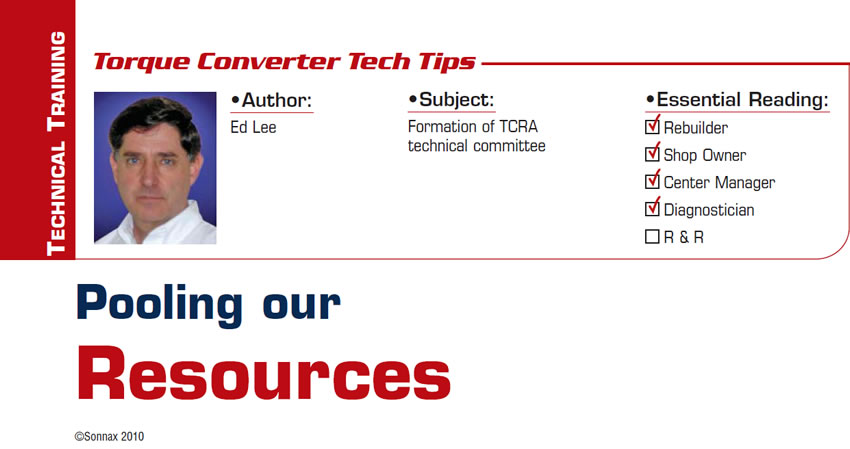4L60-E No move after rebuild
The transmission rebuilder accused the R&R man of breaking the pump during the installation process. The R&R man was certain that he had done his job correctly and that the rebuilder must have done something wrong during the rebuild. To help pinpoint the problem, a pressure gauge was installed into the line-pressure port. To everyone’s surprise, the line pressure was normal. This meant that not only was the pump not broken but also the PR valve was not stuck open. This also meant that the transmission would have to be removed from the vehicle and at least partially disassembled.
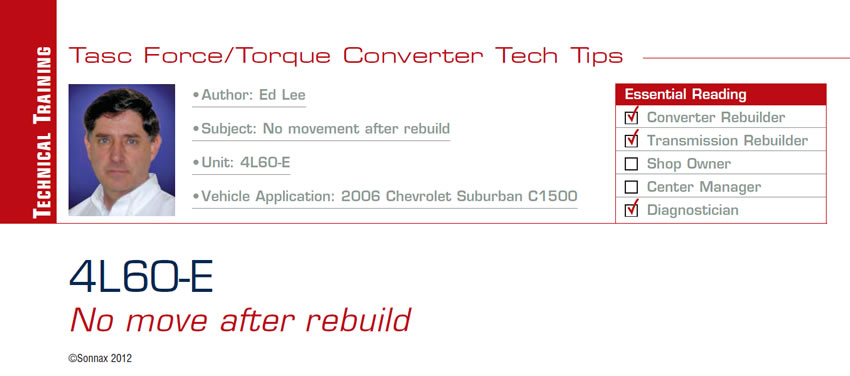
History Repeats Itself
Most torque-converter rebuilders routinely deal with the undersize pilots on GM 298mm converters. It is common either to build up the pilot by welding and then re-machine, or to sleeve the pilot area. The issue is so widespread that the repair is a requirement on the OE remanufactured-converter process.
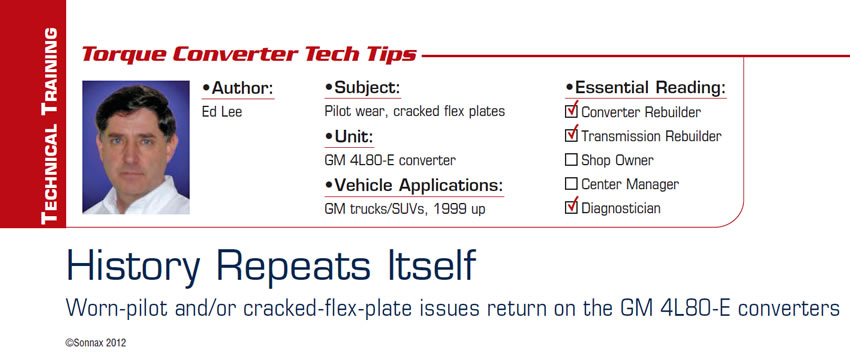
Troubleshooting Lockup Issues
The first thing that you need to know is the type of lockup system you are working with. The lockup configuration will be either a conventional system with single or multiple clutches or a clutch-pack system such as those found in the 722.6 Mercedes and Jatco RE5R05A converters. The 722.6 Mercedes converter was covered in the May and June 2010 issues of Transmission Digest, and the Jatco RE5R05A was covered in the October 2011 issue. This article will focus on the conventional clutch setup.
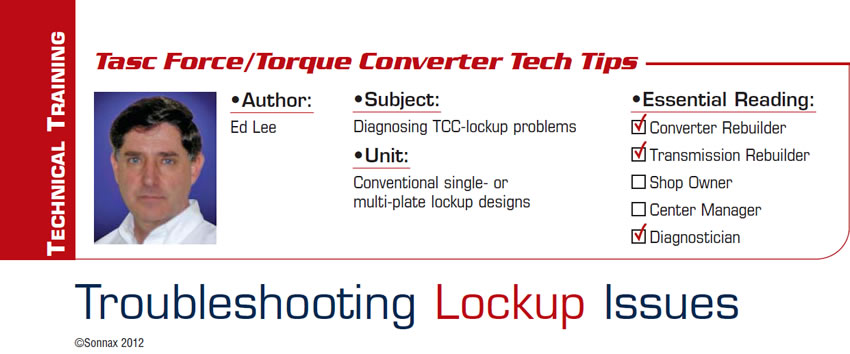
Upgrading the Honda Impeller-to-Stator Bearing
Torque-converter rebuilders have been reporting Honda bearing failures in increasing numbers. The bearing failures have been from different locations within the converters and have been reported in most of the Honda and Acura models. The most common of the failures has been the bearing between the impeller and stator in the larger-diameter converters. In all converters, the bearing in this location carries most of the thrust load when the vehicle is accelerating, and it is typically the first bearing to fail. Because the larger-diameter converters are used in the larger, higher-torque V-6 applications, the thrust loads on this bearing are even greater.
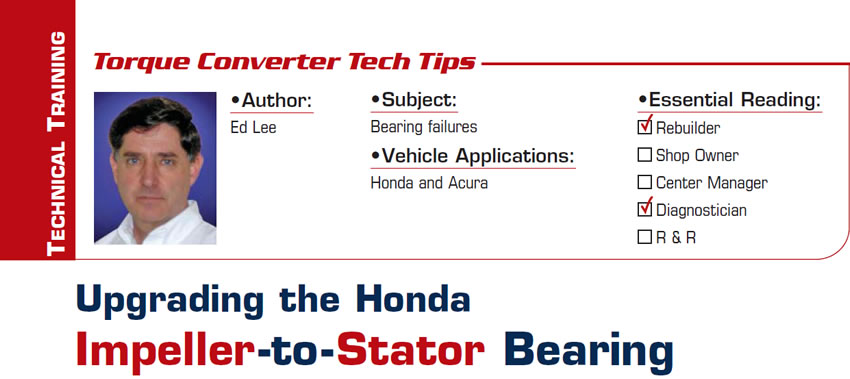
Salvaging the Cover on Overheated Honda Converters
The normal hydraulic forces within the torque converter push the TCC piston toward the cover; the TCC piston reacts like a “normally on” pressure switch. It is normally pushed to the apply position and is released only when the flow of TCC-release/charge oil between the piston and cover floats the piston off the cover.
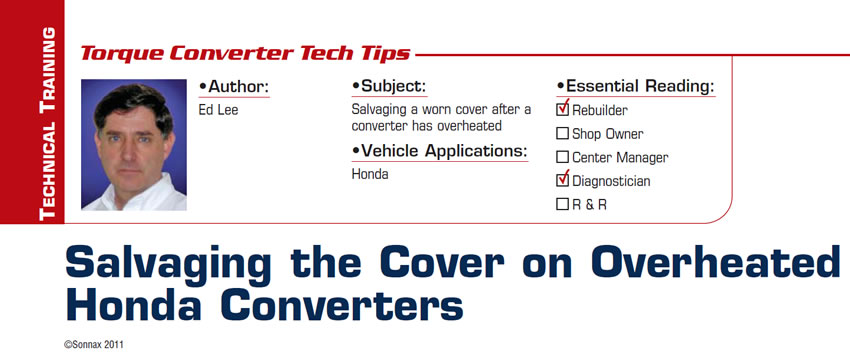
Overheated Honda Converters/740 Codes
Overheated Honda converters have become a living nightmare for many transmission and torque-converter shops, one that has lingered way too long because of the many misconceptions and missteps during the problem-solving process. The blame game has gone back and forth, but the torque-converter rebuilders have been receiving most of the criticism.
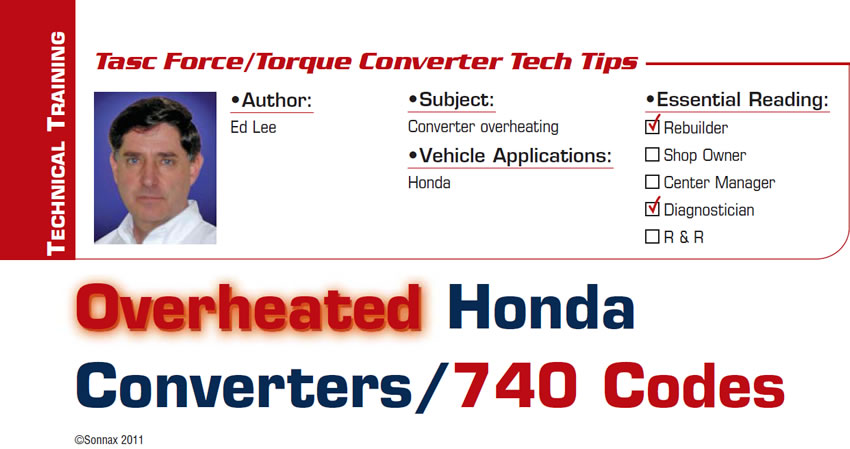
Retrofitting the GM 12-Inch 350/400 Non-Lockup Converter
The GM 12-inch 350/400 non-lockup converter is still very popular with torque-converter rebuilders. The converters are needed for many vehicles from that era that are being restored, and even more are used in the construction of street rods. The high demand and limited availability for cores have been an issue with some rebuilders. The lack of cores is easy to understand when you consider it has been more than three decades since the last GM 12-inch non-lockup converter was manufactured.
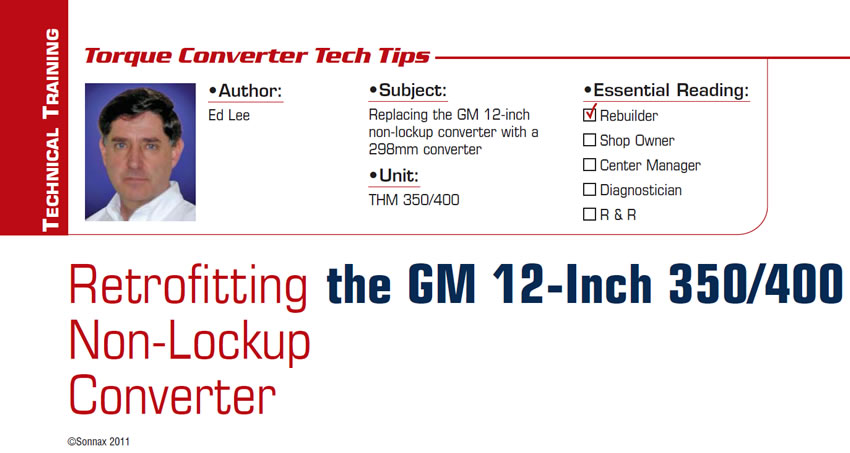
New Converters: Visually Inspect, Measure, Document
Every torque-converter shop should have a system to visually inspect, measure and document a converter when it is seeing the converter for the first time.
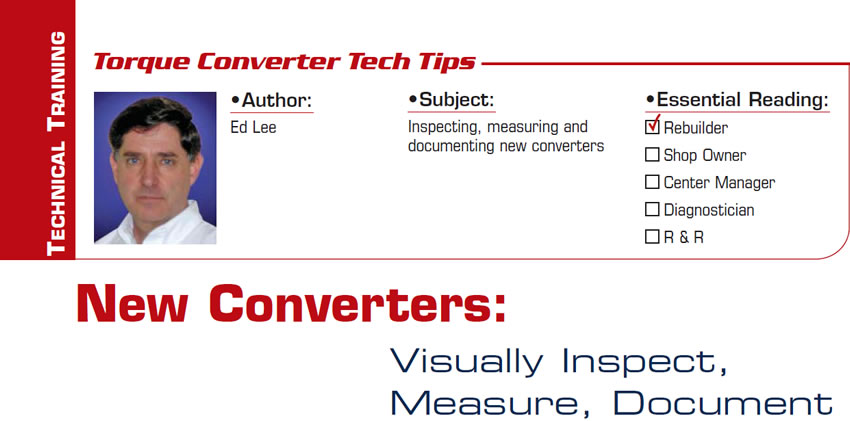
Overall-Height Issues and Pump-Gear Problems
Some GM vehicles with 4L60-E transmissions and 300-millimeter converters are experiencing higher-than-normal pump-gear failures. Affected vehicles are 2002-2003 Bravada, Envoy and Trailblazer (Dacco B-85 VJCX) equipped with the 4.2L engine. An easy way to identify this converter is that it is the only GM 300mm unit whose impeller overlaps the front cover rather than vice versa.
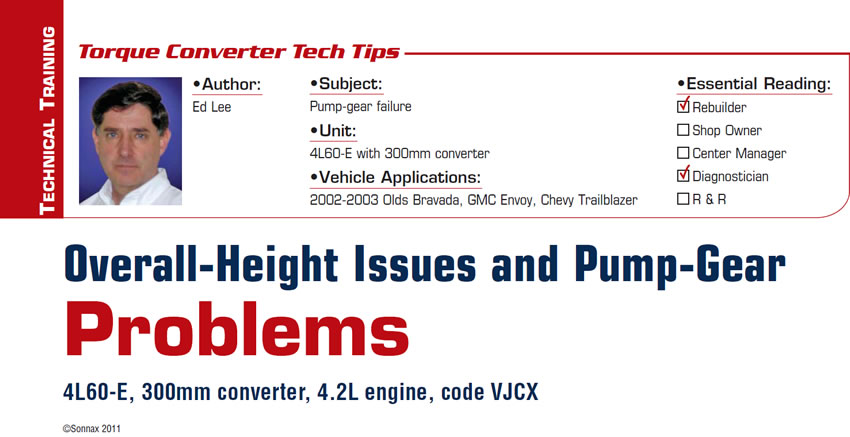
First Aid for Stators
In the early days of torque-converter rebuilding, most of the routine work involved re-machining thrust surfaces and then restoring clearances. Available service items such as thicker thrust washers and thicker end caps made this work relatively easy.
When the outer race of the one-way clutch became loose in the stator, rebuilders of the day faced a far-more-difficult challenge. The splined area on the outside diameter (OD) of the outer race broached a mirrored spline on the inside diameter (ID) of the stator when it was originally pressed into place (Figure 1).
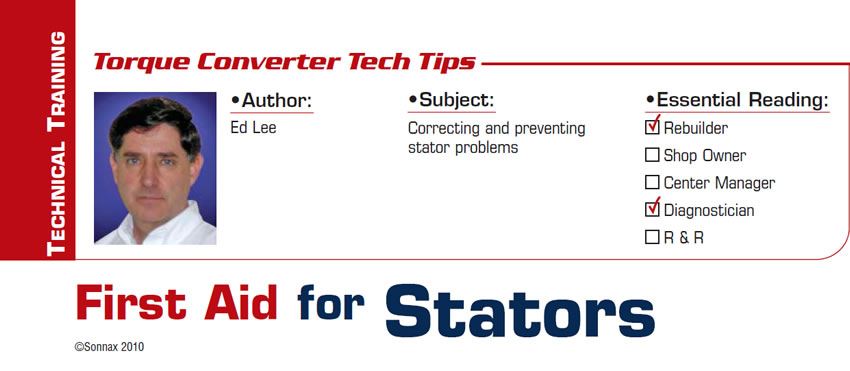
4R/5R55E: Engine Stall on Engagement after Rebuild
A local general-repair garage brought a 5R55E transmission and converter to a transmission shop for a rebuild. The transmission came out of a 1997 4.0-liter Ford Explorer with 216,456 miles on the odometer. The shop had the correct rebuilt transmission and converter in stock, so exchanging the change-over parts was all that was necessary to return the unit to the garage.
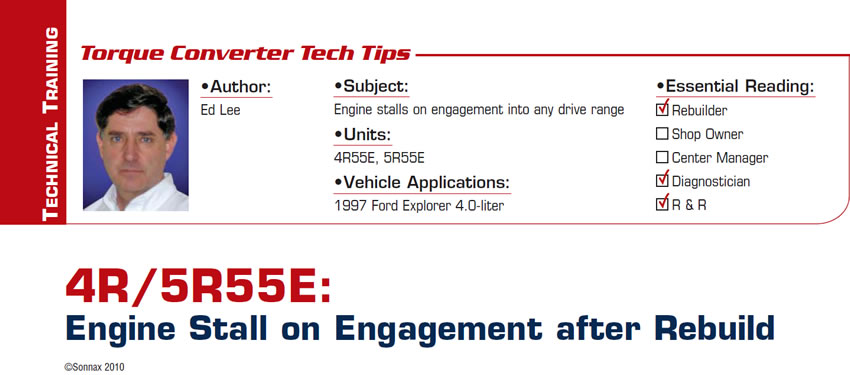
Pooling our Resources
The Torque Converter Rebuilders Association (TCRA) recently formed a technical committee to address the technical needs of torque-converter rebuilders and funnel technical information to its members. This information will be presented on the TCRA Web site and in the TCRA newsletter, among other publications.
